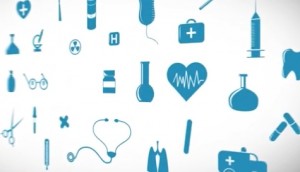 Rather than partner with an existing sensor maker, AT&T has created its own device to measure pollutants that could set off asthma attacks and warn people with asthma that it may not be safe to spend a lot of time outside.
Rather than partner with an existing sensor maker, AT&T has created its own device to measure pollutants that could set off asthma attacks and warn people with asthma that it may not be safe to spend a lot of time outside.
The telecommunications giant, through its AT&T ForHealth initiative, previewed the sensor, called Asthma Triggers, at last week's mHealth Summit in National Harbor, Md. Asthma Triggers measures volatile organic compounds (VOCs)—a class of chemicals that asthmatics are particularly sensitive to—in the air.
The sensor connects via ZigBee to a smartphone, tablet or PC to send data to AT&T's health information exchange platform, known as Healthcare Community Online, to measure the true risk for people in a given geographic area. AT&T says 27,000 adults miss work and 36,000 children miss school every day in the US due to asthma symptoms, citing data from the Asthma and Allergy Foundation of America.
"AT&T Labs researchers first decided to create an asthma sensor when they became aware of the rising trend in asthma sufferers, which is currently at its highest level on record," AT&T Labs researcher Bob Miller explains in an extensive interview with Medgadget.
"For the Asthma Triggers project, we worked with a manufacturer to create the miniature VOC sensor, however, there is much more to making a new healthcare measurement solution work productively," Miller says.
"There have to be software, connectivity and a network to get the sensor data into a form that can be interpreted by physicians, caregivers and patients. That's where AT&T’s research comes in. The sensor itself is part of an end-to-end measurement, wireless transmission, data storage and analysis system to get such a concept ready for 'meaningful use,'" Miller adds.
Meaningful use, of course, is the $27 billion federal incentive program for electronic health records (EHRs).
"The opportunity to innovate in this field is vast and a collaboration between AT&T's Labs and the AT&T ForHealth HIE platform was natural considering the brilliant minds, technology and expertise in both groups – and ultimately the power of the AT&T network which powers the device," Miller says.
The sensor, which currently is a prototype, is intended to be part of a wider personal telehealth ecosystem. It is "an example of what the future of healthcare will enable for patients as sensors and computer-assisted analytics become more commonplace," according to Miller.















